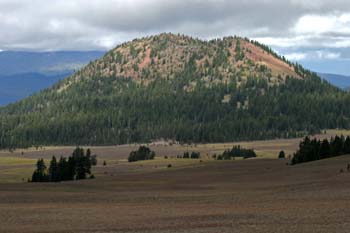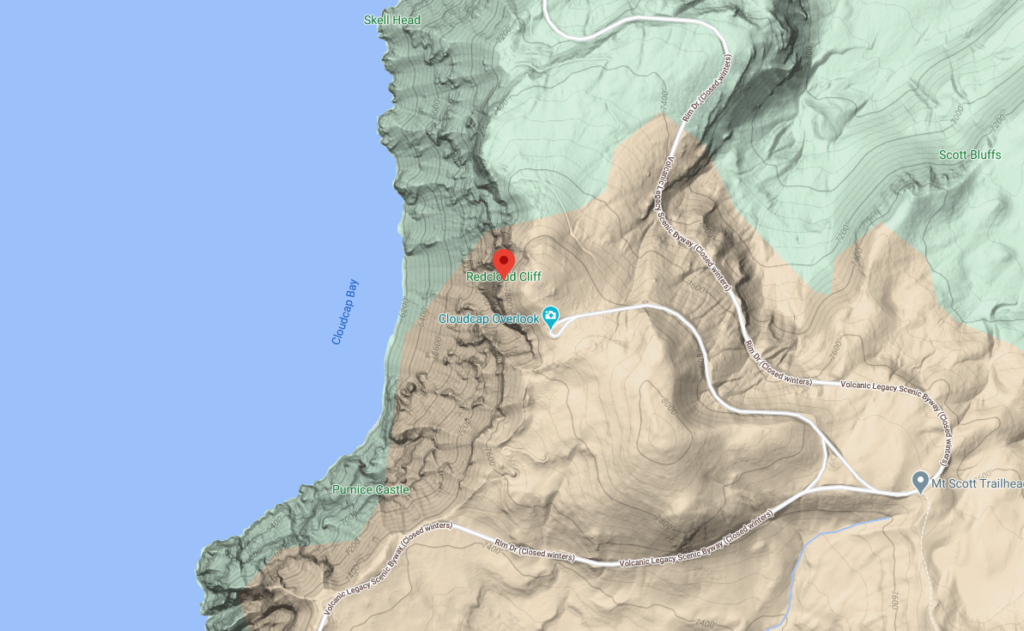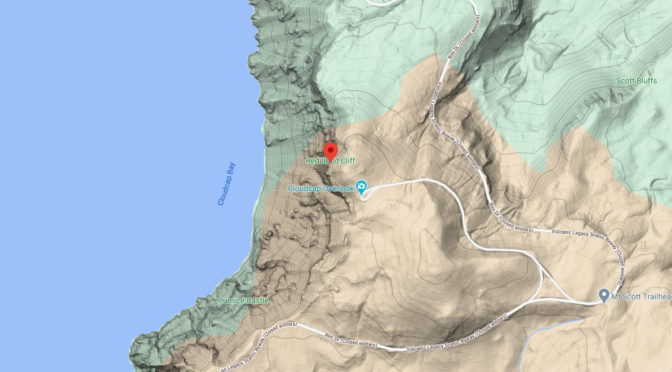Red Cone – Prominent Geological Features of Crater Lake National Park

This is the best preserved, the largest, and probably the youngest of the three northern cones. Much more lava escaped from this vent than from Desert Cone or Bald Crater. Not only do flows appear on the cone, along the south rim of the crater, and on its western wall, as well as on the north and east flanks, but thick tongues of vesicular basalt make up the prominent shoulder at the southeast base of the cone … [The Parasitic Scoria Cones of Mount Mazama: Red Cone, The Geology of Crater Lake National Park, Oregon (1942) by Howell Williams]

Other pages in this section
- Applegate Peak
- Bald Crater
- Cloudcap
- Crater Lake Caldera
- Crater Peak
- Desert Cone
- Devils Backbone
- Dutton Cliff
- Eagle Crags
- Garfield Peak
- Godfrey Glen and Colonnades
- Grouse Hill
- Hillman Peak
- Kerr Notch
- Llao Rock
- Llaos Hallway
- Maklaks Crater (Diller Cone)
- Mazama Rock
- Mount Scott
- Phantom Ship
- The Pinnacles
- Pumice Castle
- Pumice Desert
- Pumice Point
- Redcloud Cliff
- Rugged Crest
- Scott Bluff
- Sentinel Rock
- Skell Head
- Sun Notch
- Timber Crater
- Union Peak
- The Watchman
- Williams Crater (Forgotten Crater)
- Wineglass
- Wizard Island
*** previous title *** --- *** next title ***


